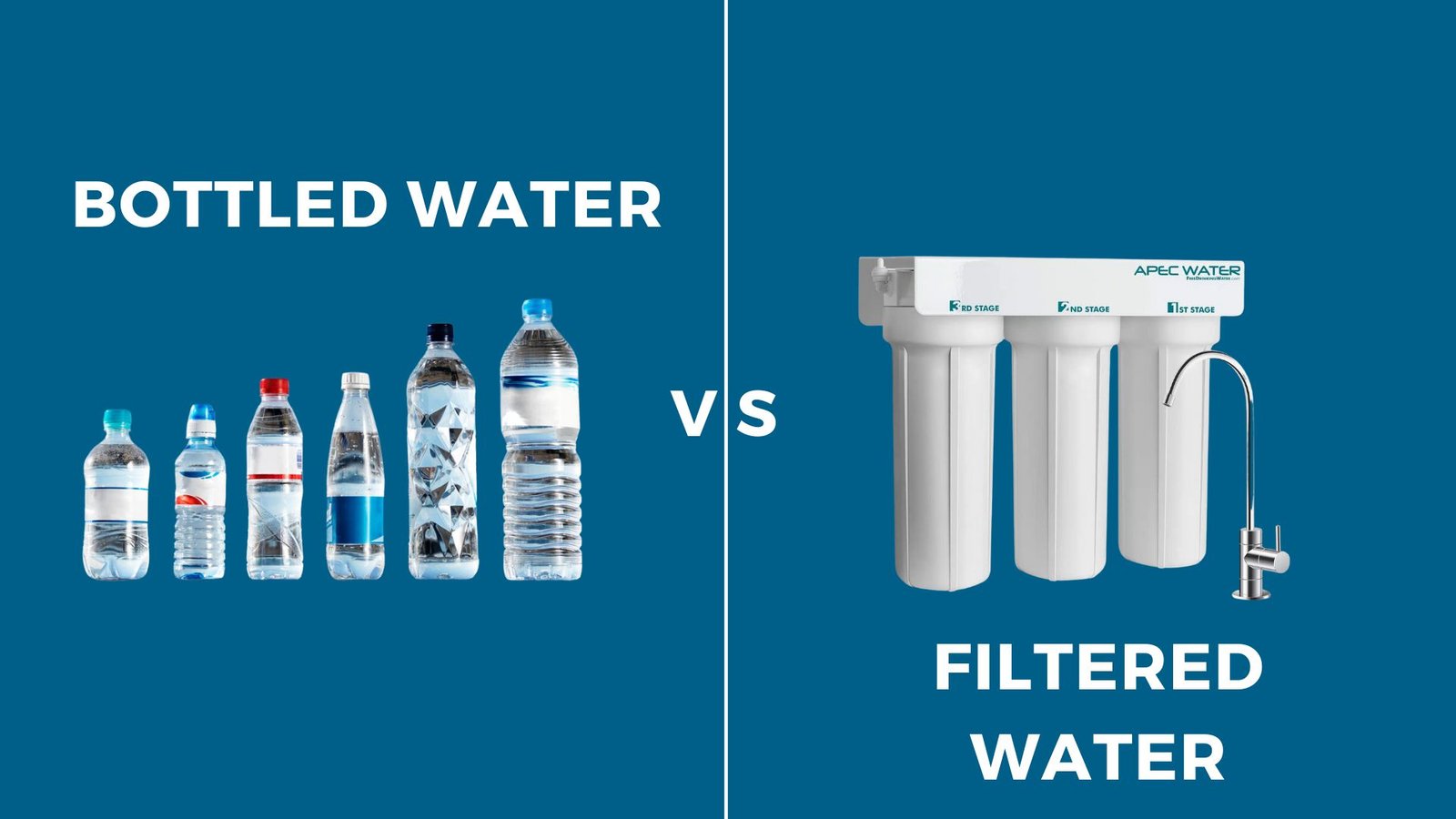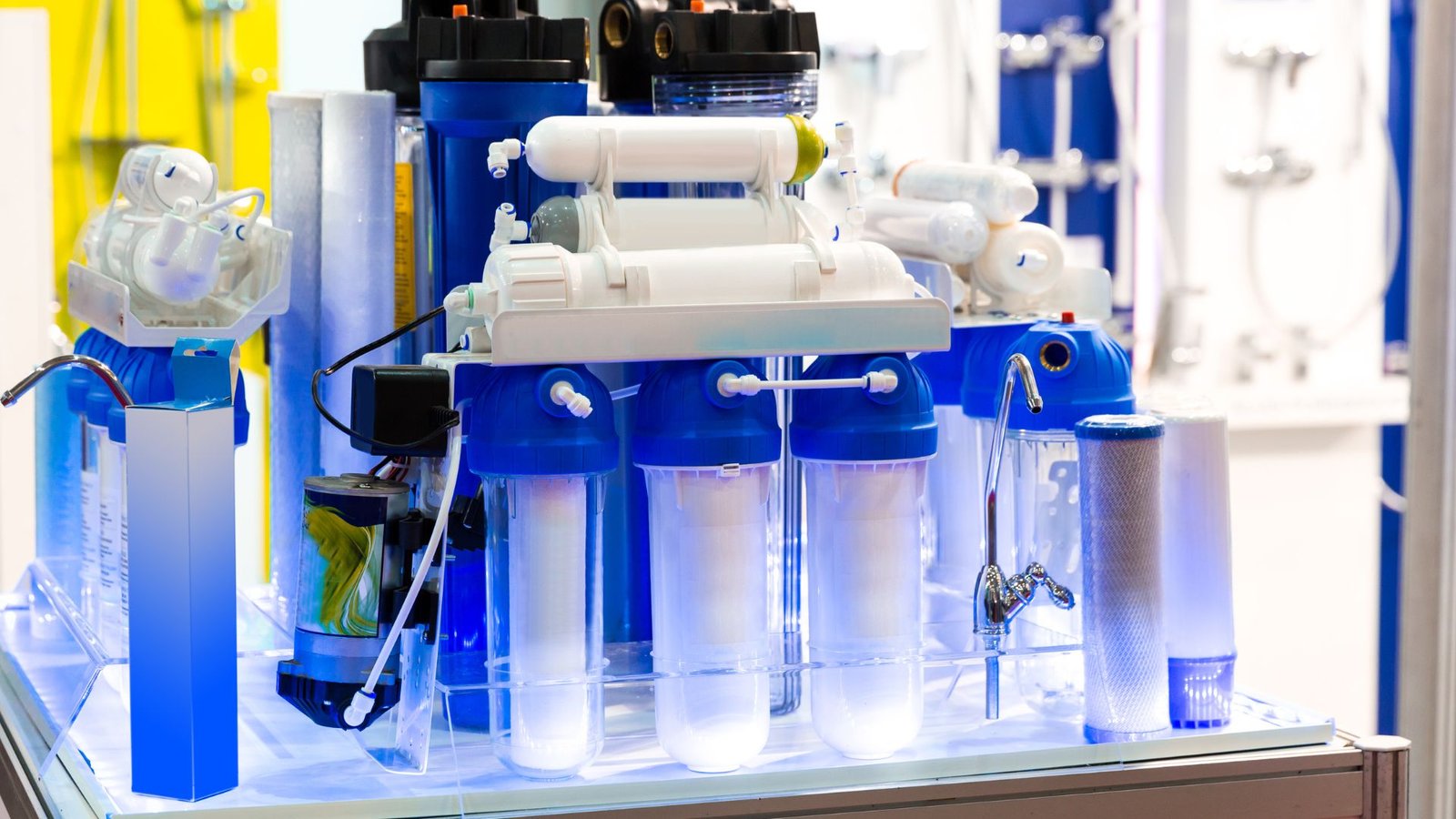Filteredwaterguide.com is supported by readers. If you purchase through referral links on our site, we make a commission at no extra cost to you. Learn more.

Pure, clean drinking water shouldn’t be complicated – but with so many options available, how do you choose between filtered and bottled water?
We’ve spent years testing and analyzing water quality, and the choice isn’t always straightforward.
Our research shows that depending on your location, neither bottled nor filtered water automatically guarantees better quality than your tap water.
While the EPA regulates tap water for safety and drinkability, understanding your water’s source is crucial for making an informed decision.
Join us as we break down the key differences between bottled and filtered water to help you determine which option best suits your needs.

Through our extensive testing and research, we’ve found that bottled water isn’t just regular water in a bottle – it’s actually classified as a food product. The Food and Drug Administration (FDA) oversees bottled water production with strict requirements for:
Our analysis confirms that regulated bottled water must be pure without additional ingredients. When manufacturers add elements like fluoride, they must clearly state this on the label and stay within FDA-specified limits.
In our professional testing, we’ve encountered numerous varieties of bottled water, each with distinct characteristics. Here’s what we’ve discovered about the main types:
Artesian well water comes from pressurized underground aquifers – natural formations of earth, sand, and porous rock. We’ve observed that premium brands like Fiji and Voss source their water from these natural aquifers, which explains their higher price point.
Spring and mineral waters have impressed us with their natural purity. These waters flow naturally from subsurface regions to the surface, with mineral water particularly rich in natural nutrients. Our testing confirms that manufacturers don’t alter the molecular composition of these waters.
We’ve also extensively analyzed purified water, which starts as tap or groundwater before undergoing filtration to remove impurities, bacteria, and chemicals.
In our research, we’ve noted that sparkling water, soda water, tonic water, and seltzer water fall under different regulations. The FDA classifies these as soft drinks due to their carbonation, setting them apart from traditional bottled waters.
Through our laboratory testing, we’ve studied the various methods of purifying bottled water:
Based on our extensive testing, we must note that while these purification methods are generally effective, they’re not always foolproof in preventing illness. While bottled water-related illness is rare, we recommend that pregnant individuals, elderly people, and those with compromised immune systems exercise additional caution and stay informed about any manufacturer treatment issues.
Through our testing and analysis, we’ve identified several key advantages of bottled water:
Our research has also revealed significant drawbacks:

After years of testing various water sources, we’ve found that filtered water – tap water processed through purification systems – offers comparable quality to bottled water at a fraction of the cost.
Our extensive research shows that your home water typically comes from two sources:
Municipal Water: We’ve analyzed how this water travels from rivers, reservoirs, or aquifers through treatment plants before reaching your tap. While treatment plants ensure safety, our testing reveals they don’t always guarantee optimal purity.
During our facility tours, we’ve observed how municipalities add controlled amounts of:
The municipal treatment process, as we’ve studied it, includes:
Well Water:
Our field tests consistently show that well water, while naturally sourced, often contains more pollutants than municipal water. We’ve identified several contamination sources:
Based on our experience, well water homes require robust filtration systems. We’ve found that hard water minerals can damage appliances and affect skin and clothing quality. While a water softener requires initial investment, our long-term analysis shows significant savings in appliance maintenance and replacement costs.
Through our testing, we’ve confirmed that reverse osmosis systems effectively remove harmful chemicals, producing clean, refreshing drinking water.
Our cost analysis reveals that while water filters might seem expensive initially, they provide significant long-term savings compared to bottled water. Through our testing, we’ve identified several types of water filters that suit different household needs:
In our hands-on testing, we’ve found faucet filters to be remarkably efficient. They attach directly to your tap, providing instant filtered water. While we’ve noticed the slower flow rate, our analysis shows this actually indicates proper filtration. We’ve tested models that fit virtually every faucet design.
Our budget-conscious testing confirms that pitcher filters offer exceptional value. These simple yet effective systems include built-in filtration elements. We particularly recommend them for temporary living situations – our team has found them perfect for apartment dwellers and college students.
Through our comparative testing, we’ve discovered that countertop filters provide an excellent solution for those wanting faster water flow. They connect to your kitchen faucet and deliver filtered water through a separate spout. Our only caveat: you’ll need to dedicate some counter space to the unit.
Our installation experience shows these systems offer superior filtration while staying hidden from view. We’ve found they remove more contaminants than portable options, though installation requires some plumbing knowledge. In our testing, they’ve proven ideal for kitchens with limited counter space.
For whole-home protection, we’ve extensively tested whole house water filtration systems. These “point of entry” systems, as we call them, filter water before it reaches any faucet in your home. Our analysis shows they’re particularly effective at removing municipality-added chemicals before water enters your pipes.
When selecting filters, our lab testing emphasizes the importance of micron ratings. We examine both absolute micron ratings (largest hole size) and nominal ratings (average hole size). Our research consistently shows that smaller absolute micron ratings deliver superior contaminant removal.
Our laboratory testing has revealed distinct advantages for different filtration methods. Here’s what we’ve discovered through our extensive research:
Activated Alumina Filters Through our testing, we’ve found these filters excel at removing fluoride, arsenic, and other chemical compounds. Our research shows they work particularly well in pitcher filters, offering an accessible and budget-friendly solution.
Activated Carbon Filters In our lab analysis, these filters consistently impress with their ability to trap larger contaminants. We’ve tested their effectiveness across various scales – from compact pitcher filters to comprehensive whole-house systems. The carbon blocks contain microscopic pores that effectively capture impurities as water passes through.
Reverse Osmosis Our extensive testing confirms that reverse osmosis removes the most comprehensive range of contaminants. We’ve observed how this method forces water through a specialized membrane, separating pure water from contaminated waste. Based on our experience, these systems work best in countertop and under-sink installations.
For maximum water purity, we strongly recommend a reverse osmosis treatment system. While our cost analysis shows a higher initial investment, we’ve calculated substantial long-term savings.
Through years of testing and analysis, we’ve identified these key benefits:
Our comprehensive testing has also revealed several considerations:
After years of testing both options, our verdict is clear: filtered water emerges as the superior choice for most households.
While bottled water delivers consistently pure, filtered spring or artesian water, our research highlights a significant drawback – the ongoing expense of purchasing water that should be readily available at home.
Our environmental impact studies have revealed a sobering fact: plastic water bottles require approximately 450 years to decompose when not recycled. Even gallon jugs contribute substantially to plastic waste.
Through our extensive testing of filtered water systems, we’ve found they offer unmatched convenience and accessibility. Whether you choose faucet-mounted filters or filtered pitchers, you’ll have fresh, clean water whenever you need it.
We’ve also evaluated the environmental benefits of switching to filtered tap water. Our research shows that using reusable water bottles with filtered tap water dramatically reduces plastic waste while providing the same quality hydration.
Based on our comprehensive analysis, filtered water stands out as the clear winner. We’ve tested everything from basic faucet filters to advanced whole-house conditioning units, and the benefits consistently outweigh those of bottled water:
Whether your water comes from municipal sources or a private well, our testing confirms that filtered water provides the best combination of quality, convenience, and sustainability.